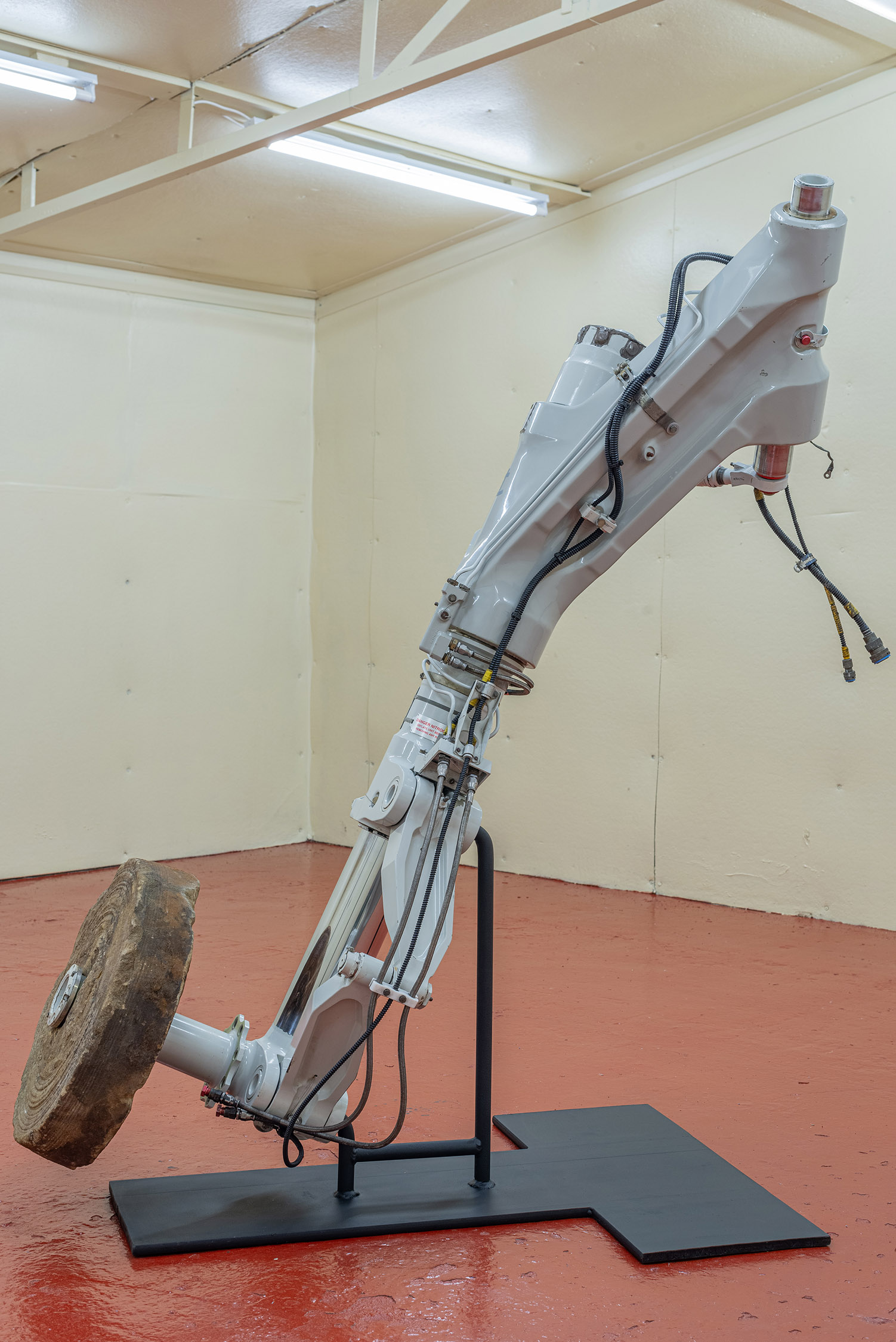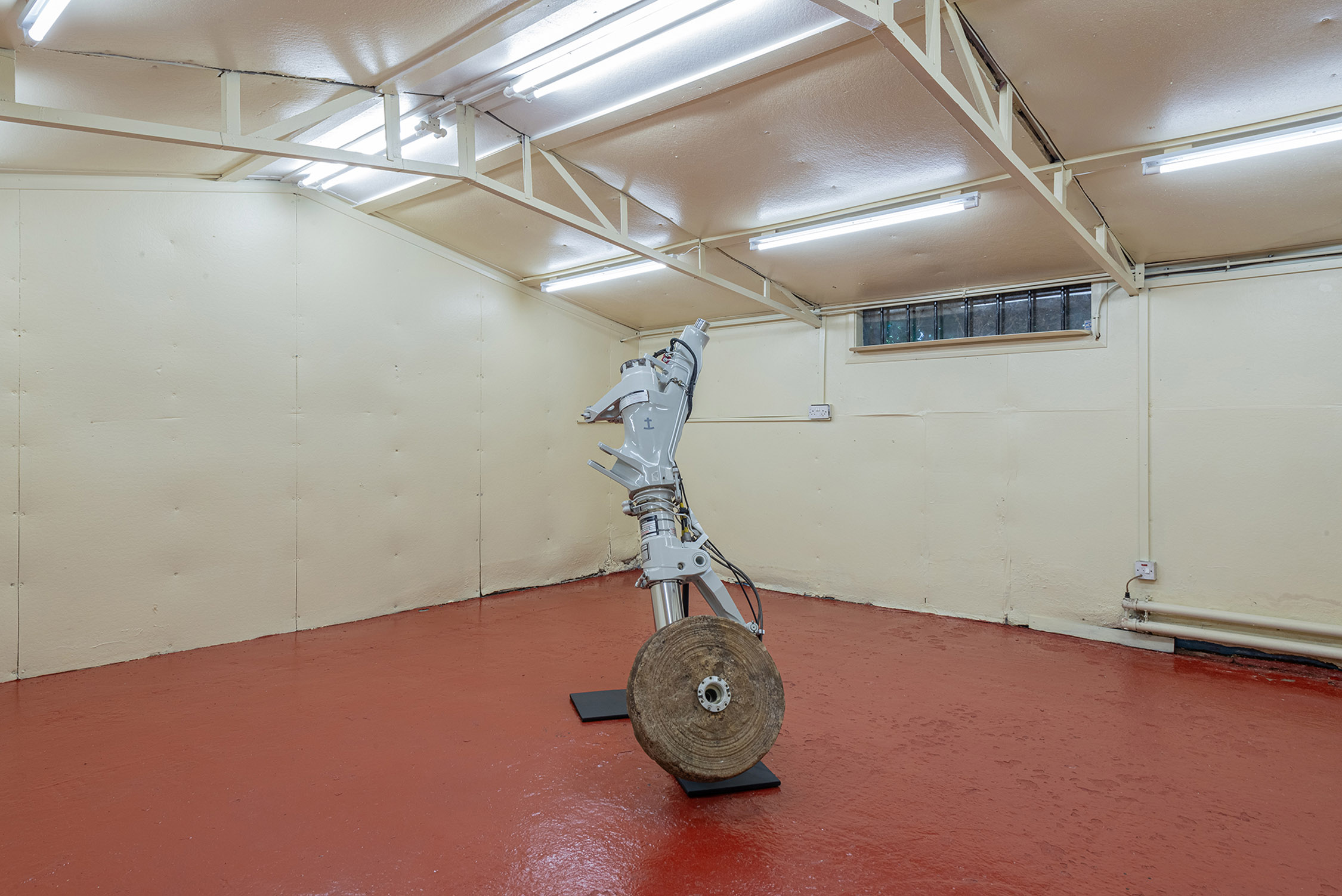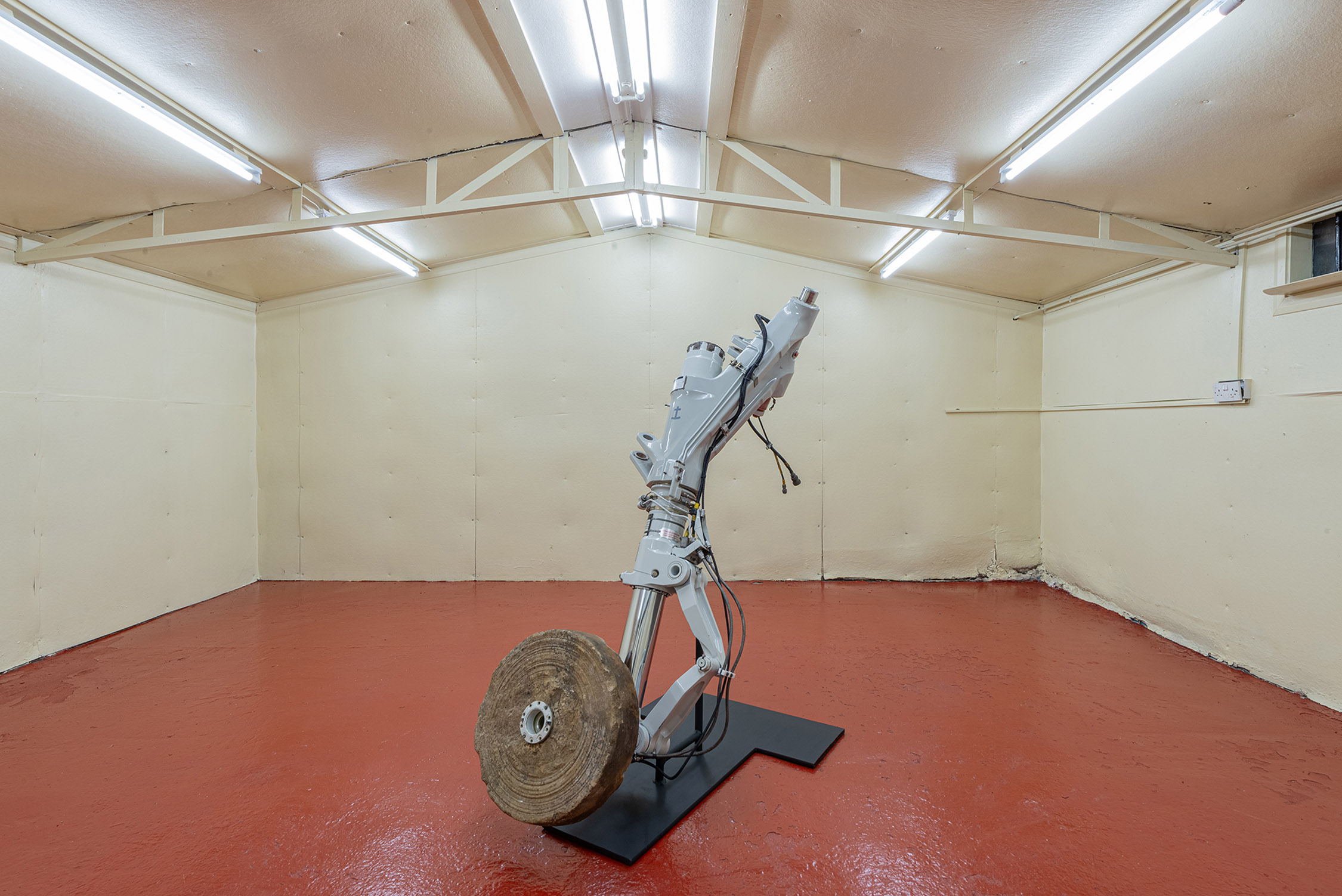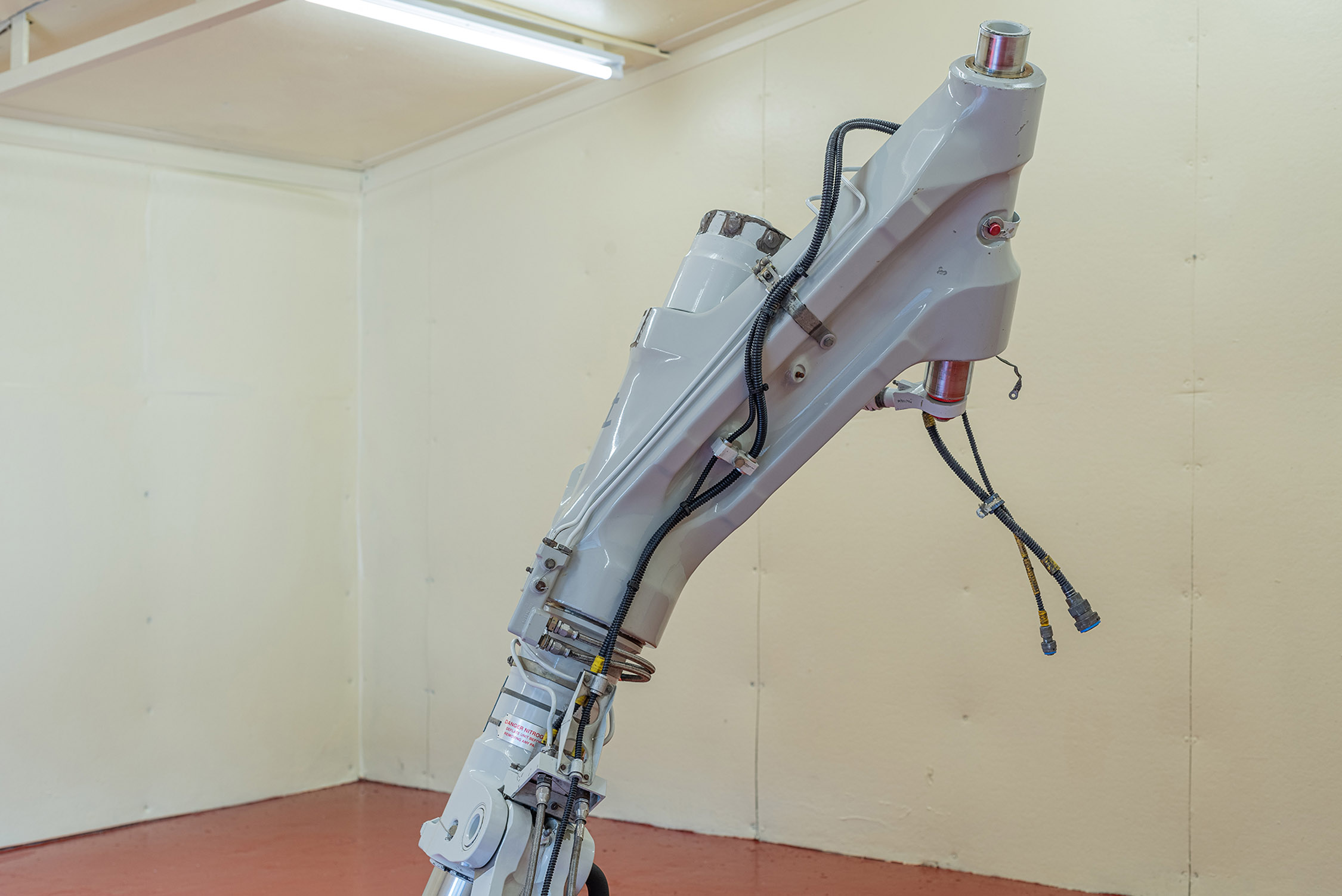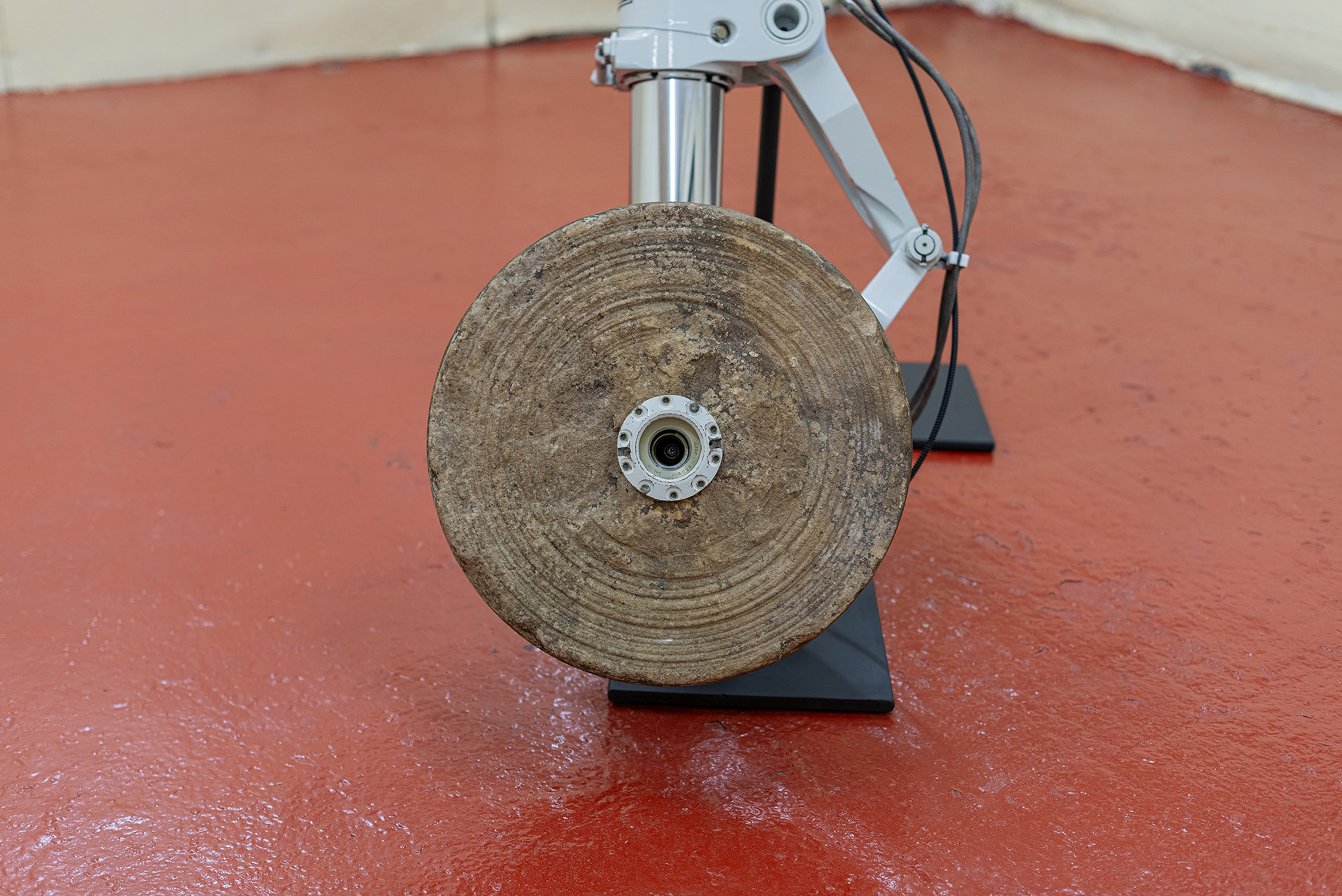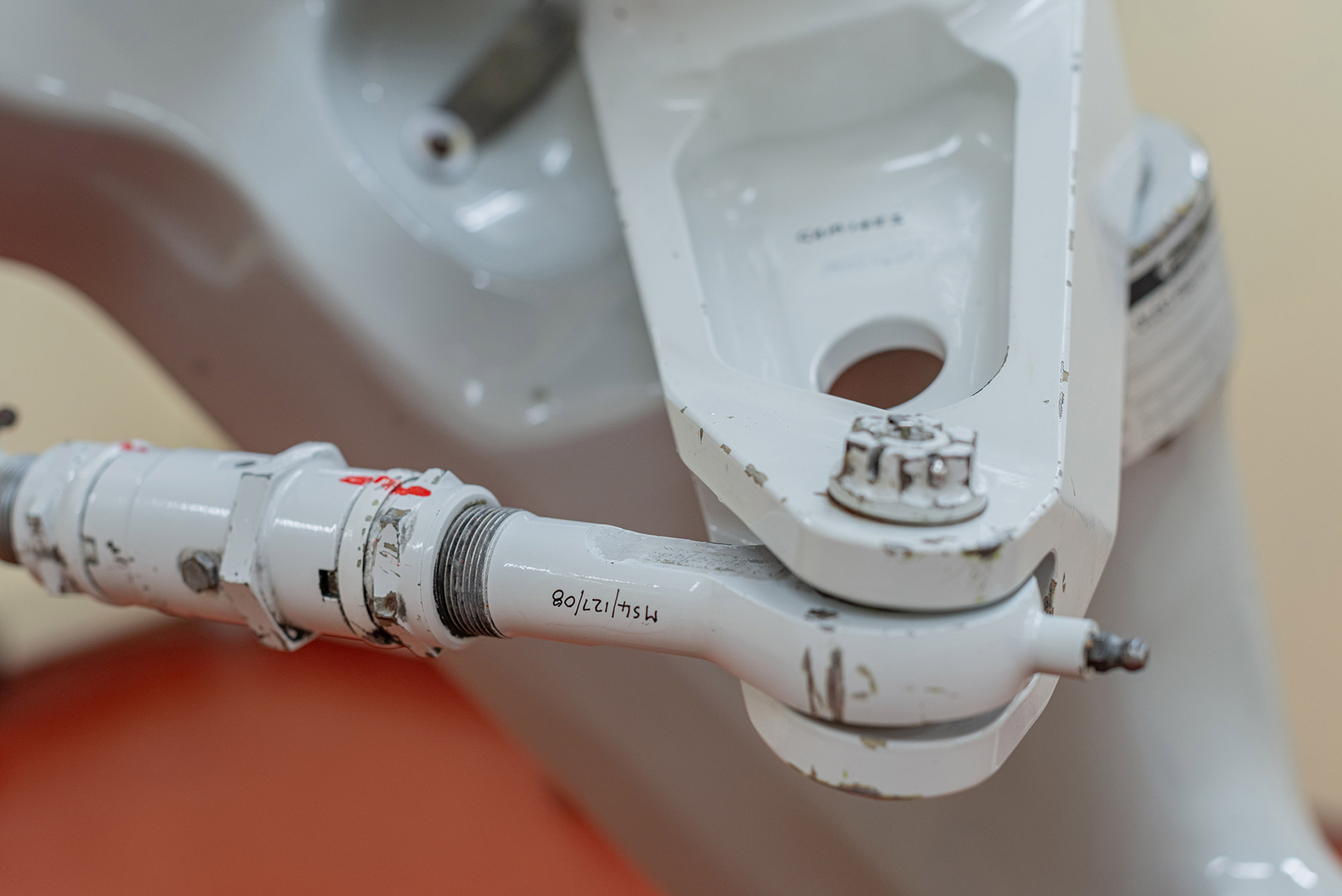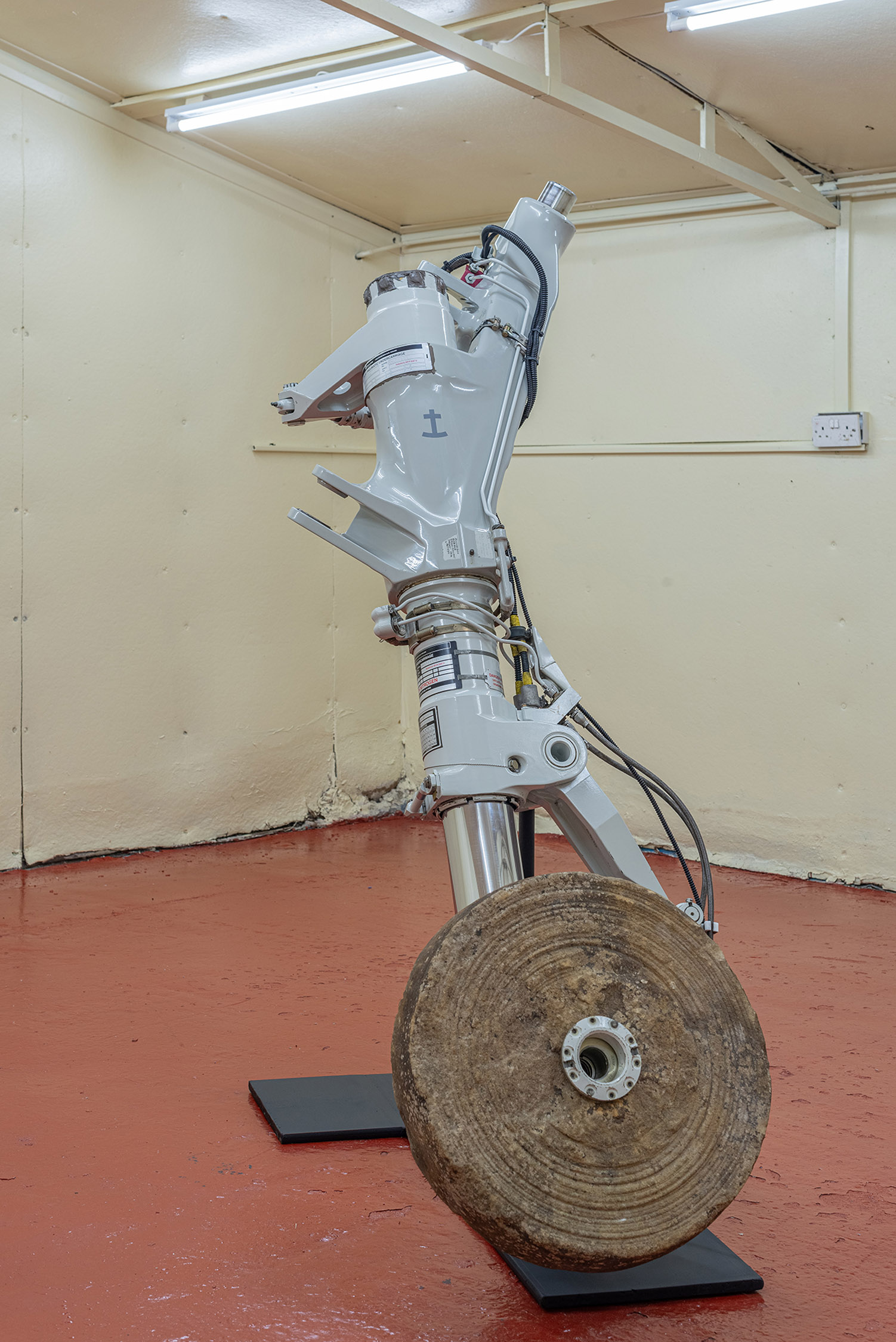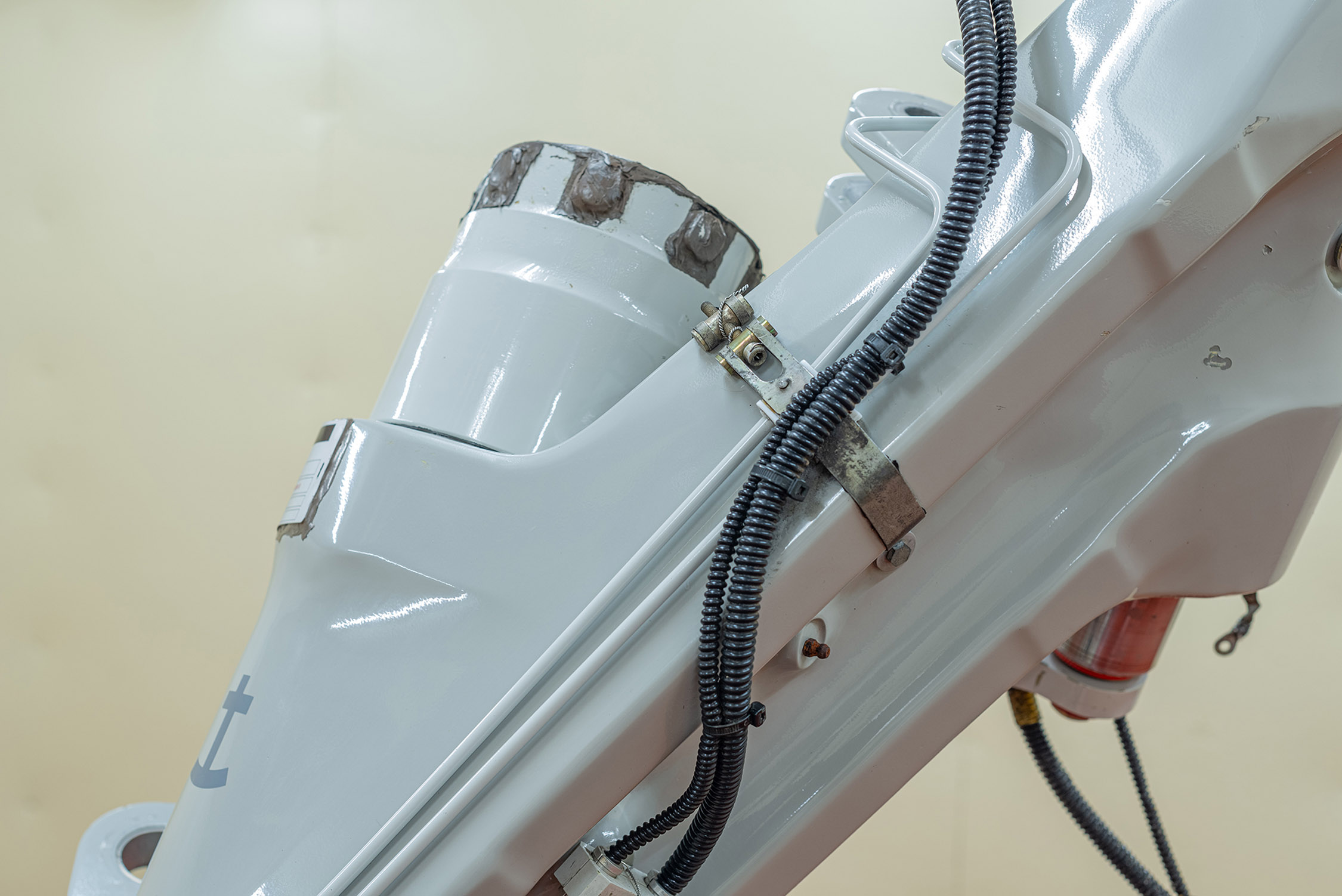Centrifugal force is an outward force apparent in a rotating reference frame. It is based on the simple observation of a rotating object being pushed away from the axis of rotation. However, the force itself is fictitious. In the 18th century it was shown that centrifugal force does not exist when a system is described relative to an inertial frame of reference. The experiential observation and the calculable mechanics don’t quite match up.
Spin insinuates the production of a buffer. Its edge is the precipice of forces and states and the poetics of their collisions. Chemical bonds are clashed with directional forces and are swept up in the sequence of form undergoing friction, leading to loss in exchange for a function which polishes its way into an eventual form – a designed loss of form.
The wheel itself becomes the buffer between the myriad of human design and the ever greater variants of external conditions through a friction that plays out in two opposing directions: additively towards function and reductively towards form. The manner in which events are spelled out and measured are tightened into subsections. Torque is applied to subjective time in which the inherent violence and its compressed eddies are translated via grinding into light, volume, and an eventual sort of uselessness via usefulness.

